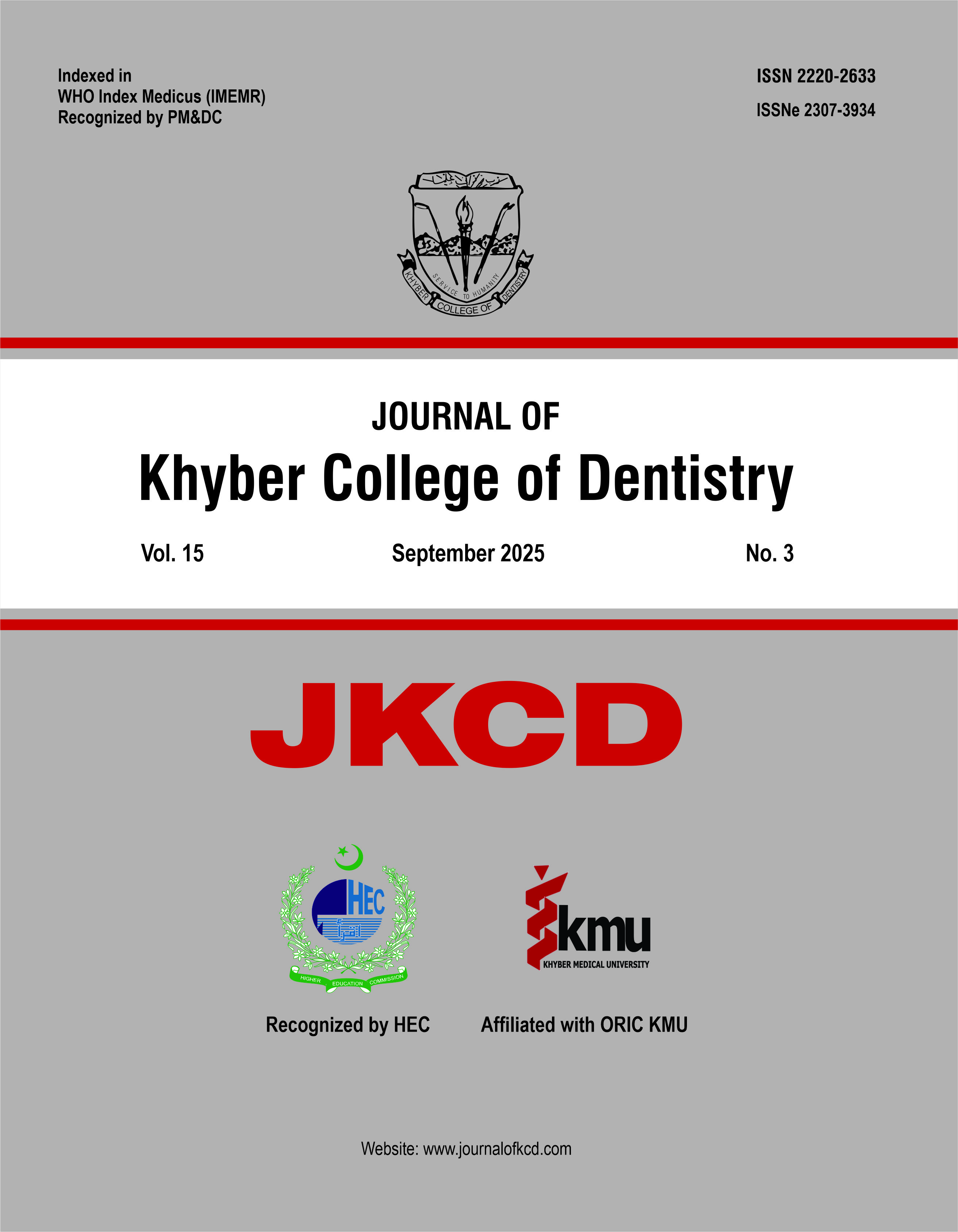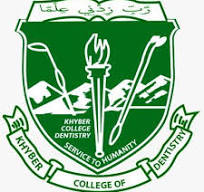MICROLEARNING ENVIRONMENT OF DENTISTRY STUDENTS: A SCOPING REVIEW
DOI:
https://doi.org/10.33279/jkcd.v15i03.674Keywords:
Microlearning environment, teaching quality, teaching practices, competence in teachingAbstract
Objectives: This study aimed to accomplish a systematic search of the existing literature on microlearning in dentistry to define important terms and concepts, describe microlearning as a teaching approach and assess the pedagogical results that students in dentistry encounter. This scoping review identifies noticeable trends, patterns, and evidence of how microlearning has been used and implemented in academic settings.
Materials and Methods: The bibliographic databases PubMed (MEDLINE), WILEY online library, Springer Link, ERIC, and Google Chrome were used to conduct a scoping review. Keywords and subject titles about just-in-time learning, electronic learning, or microlearning in conjunction with dentistry were integrated. Both antegrade and retrograde research was carried out. The search has no date restrictions, however, only English-language publications were included.
Results: Using the above-mentioned keywords, the total articles found were 363 (ERIC), 279 (Pubmed), 52,864 (Wiley online library), 10,289(springer link), (2,910,000) Google Scholar using microlearning environment as keywords 4,670,000(Google scholar) using learning environment measure as keywords. By applying screens like full text, last 05 years, English language, journal articles, etc, 25(ERIC), 85 (Pubmed), 64 (Wiley online library), 40 (springer link), 20 (Google Scholar), following articles were shortlisted. By removing duplicates from PubMed, 27 articles were retained.12 articles were fi nally shortlisted after removing all irrelevant articles.
Conclusion: Microlearning bridges the gap between planned, delivered, and learned curricula. A positive learning environment is fostered as students’ feedback is valued and learning occurs in small chunks, which is easy to understand. Various themes emerging out of literature have scrutinized microlearning in-depth for a better understanding of the subject and imply it in our daily practices.
References
Zhou, Y. (2018). The Construction and Application of Micro-Learning Environment Under the Background of New Media. In atlantis-press.com. Retrieved from https://www.atlantis-press.com/proceedings/icesame-18/25898402
Leong K, Sung A, Au D, Blanchard C. A review of the trend of microlearning. Journal of Work-Applied Management. 2020 Dec 7;13(1):88-102.
Murdoch-Kinch, C. A., Duff, R. E., Ramaswamy, V., Ester, T. V., Sponseller, S. A., & Seeley, J. A. (2017). Climate study of the learning environment for faculty, staff, and students at a US dental school: Foundation for culture change. Journal of Dental Education, 81(10), 1153-1163.
De Gagne, J. C., Woodward, A., Park, H. K., Sun, H., & Yamane, S. S. (2019, June 1). Microlearning in health professions education: A scoping review protocol. JBI Database of Systematic Reviews and Implementation Reports, Vol. 17, pp. 1018–1025. https://doi.org/10.11124/JBISRIR-2017
Chuang, Y. H., & Tsao, C. W. (2013). Enhancing nursing students' medication knowledge: the effect of learning materials delivered by short message service. Computers & Education, 61, 168-175.
Sandars, J. (2009). Twelve tips for using podcasts in medical education. Medical teacher, 31(5), 387-389.
Narula, N., Ahmed, L., & Rudkowski, J. (2012). An evaluation of the “5 Minute Medicine” video podcast series compared to conventional medical resources for the internal medicine clerkship. Medical Teacher, 34(11). https://doi.org/10.3109/0142159X.2012.689446
Alqurashi, E. (2018). Creating a microlearning environment to facilitate retention of information: a three-step approach. Proceedings of the 41st Annual AECT, Kansas, United States. Alqurashi, Emtinan. (2017). Microlearning: A Pedagogical Approach For Technology Integration.
Alqurashi, E. (2018). Creating a microlearning environment to facilitate retention of information: a three-step approach. Proceedings of the 41st Annual AECT, Kansas, United States. Alqurashi, Emtinan. (2017). Microlearning: A Pedagogical Approach For Technology Integration.
Buchem I, Hamelmann H. Microlearning: a strategy for ongoing professional development. eLearning Papers. 2010 Sep 1;21(7):1-5.
Nikkhoo I, Ahmadi Z, Akbari M, Imannezhad S, Ardekani SA, Lashgari61 H. Microlearning for Today’s Students: A Rapid Review of Essentials and Considerations. Medical Education Bulletin. 2023;4(1):675-87.
Munn Z, Barker TH, Moola S, Tufanaru C, Stern C, McArthur A, Stephenson M, Aromataris E. Methodological quality of case series studies: an introduction to the JBI critical appraisal tool. JBI evidence synthesis. 2020 Oct 1;18(10):2127-33.
Isba, R., Rousseva, C., Woolf, K., & Byrne-Davis, L. (2020). Development of a brief learning environment measures for use in healthcare professions education: the Healthcare Education Micro-Learning Environment Measure (HEMLEM). BMC medical education, 20(1), 1-9.
Journal of Psychological Research, 3(1), 97–110. https://doi.org/10.4090/juee.2008.v2n2.033040
Dolasinski MJ, Reynolds J. Microlearning: a new learning model. Journal of Hospitality & Tourism Research. 2020 Mar;44(3):551-61.
Semingson P, Crosslin M, Dellinger J. Microlearning as a tool to engage students in online and blended learning. InSociety for Information Technology & Teacher Education International Conference 2015 Mar 2 (pp. 474-479). Association for the Advancement of Computing in Education (AACE).
Taylor AD, Hung W. The effects of microlearning: a scoping review. Educational technology research and development. 2022 Apr;70(2):363-95.
Díaz Redondo RP, Caeiro Rodríguez M, López Escobar JJ, Fernández Vilas A. Integrating micro-learning content in traditional e-learning platforms. Multimedia Tools and Applications. 2021 Jan;80:3121-51. Díaz Redondo RP, Caeiro Rodríguez M, López Escobar JJ, Fernández Vilas A. Integrating micro-learning content in traditional e-learning platforms. Multimedia Tools and Applications. 2021 Jan;80:3121-51. Díaz Redondo RP, Caeiro Rodríguez M, López Escobar JJ, Fernández Vilas A. Integrating micro-learning content in traditional e-learning platforms. Multimedia Tools and Applications. 2021 Jan;80:3121-51.
Akbar Z, Khan RA, Khan HF, Yasmeen R. Development and validation of an instrument to measure the Micro-Learning Environment of Students (MLEM). BMC Medical Education. 2023 Dec;23(1):1-1.
Roskowski SM, Wolcott MD, Persky AM, Rhoney DH, Williams CR. Assessing the Use of Microlearning for Preceptor Development. Pharmacy. 2023 Jun 15;11(3):102.
Javorcik T, Polasek R. Practical application of microlearning in the education of future teachers. InProceedings of the European conference on e-Learning 2019 Nov 1 (pp. 254-259).
Sozmen EY. Perspective on pros and cons of microlearning in health education. Essays in Biochemistry. 2022 Apr;66(1):39-44.
Torgerson C, Iannone S. Designing microlearning. American Society for Training and Development; 2019 Dec 31.
Kaufmann R, Vallade JI. Exploring connections in the online learning environment: student perceptions of rapport, climate, and loneliness. Interactive Learning Environments. 2022 Nov 17;30(10):1794-808.
Tennyson CD, Smallheer BA, De Gagne JC.Microlearning strategies in nurse practitioner education. Nurse Educator. 2022 Jan 1;47(1):2-3.
Bal IA, Duha MS, Arslan O, Collier J, Marcelle P, Dolowitz A, Bernhardt J, Swanson M, Dash M. The Theory of Learning in Micro.
Downloads
Published
How to Cite
Issue
Section
License
Copyright (c) 2024 Dr Zainab Akbar, Dr Sabeen Saeed Butt, Dr Sana Iqbal, Dr Syed Muhammad Junaid, Dr.mushyyada Durrani, Dr Sobia Salam

This work is licensed under a Creative Commons Attribution-NonCommercial-NoDerivatives 4.0 International License.
You are free to:
- Share — copy and redistribute the material in any medium or format
- Adapt — remix, transform, and build upon the material
- The licensor cannot revoke these freedoms as long as you follow the license terms.
Under the following terms:
- Attribution — You must give appropriate credit , provide a link to the license, and indicate if changes were made . You may do so in any reasonable manner, but not in any way that suggests the licensor endorses you or your use.
- NonCommercial — You may not use the material for commercial purposes .
- No additional restrictions — You may not apply legal terms or technological measures that legally restrict others from doing anything the license permits.










